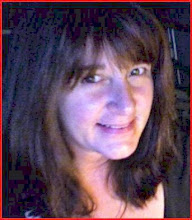
In April of 1922 J.R. Smith & M.S. Rankin published an article in the Atlanta Constitution about their new subdivision to be developed on 100 acres in south west Atlanta called Sylvan Hills. The property was located on what was then South Ashby Road, soon to be renamed Sylvan Road. The land was advertised to be nearly as level as a floor and situated in a forest of poplar, oak and hickory. The conveniences they associated with this new subdivision included: proximity to schools and churches, paved streets, paved sidewalks, water and sewer, two nearby trolley lines and its location within the city limits. The subdivision was to have few restrictions, however those restrictions included the following: "A 25 foot building line [setback] must be maintained; It is to be used exclusively for white people; [and] None of the properties can be used for stores or other commercial purposes." The property was subdivided into 50 x 150 ft lots and prices for these ranged from $775 to $1350.
By mid 1923 sales of lots and building of homes were well underway. Here is some of the wonderful verbiage associated with the promotion of Sylvan Hills Subdivision: "This splendid tract of gently rolling woodland is most appropriately named because over its entire extent the gracefully undulating knolls are covered with majestic forest trees, shading the hills and vales during the summer season, and furnishing much protection from winter blasts." Wow, trees as an asset, not an obstacle to be removed.
In May of 1924, H. A. Spencer of Norfolk, Virginia, announced the implementation of a "Cross-Town Bus" system that would run from Morningside to Sylvan Hills. The fare for riding the ten modern motor buses was 10 cents. Spencer is credited in the article as being the originator of the cross town bus system.
Home Beautiful Show Atlanta
Among the open houses for the 1925 Home Beautiful Show was a house located in Sylvan Hills on Melrose Drive (shown above). The house listed for $7,000 and was built by Wagar and Company.
By July of 1925, 135 lots had been sold in Sylvan Hills. The subdivision was touted as: "one of the showplaces of the southside metropolitan section....just a comfortable distance from industrial centers." Its proximity to the city was also listed as an advantage, being reached easily via Sylvan Road, to Dill Avenue and then along Lee - all of which were paved roads, a huge amenity at the time. Road and infrastructure improvements were being made on Woodburne Drive, Harte Drive and Mickleberry Street to accommodate the demand for lots.
"The Sun Rises in Morningside and Sets in Sylvan Hills."
This hales from one of my favorite articles, primarily because I had gone searching to document the assertion that there were ties between Capitol View Manor and Morningside, and found instead much more to establish a tie between Sylvan Hills and Morningside. (Before anyone in CVM gets their knickers in twist, we do share a connection with both Morningside and Sylvan Hills in the form of real estate agents Maddox & Tisinger, who sold properties in all three neighborhoods, its just that we don't get mentioned like Sylvan does...often....and waxing poetically.) This particular article talks about James Jackson, a well known builder at the time. Jackson was building homes both in Morningside and in Sylvan Hills. Probably the most interesting part of this article is a discussion of the superior craftsman skills necessary to build a modern home using modern materials, and how that raises cost of construction.
Another builder who left his mark on Sylvan Hills is R.M. Cole. The promotional article for Cole published in 1925 talks about how his houses were the prettiest in Sylvan Hills. An interesting commonality that he shares with Mr. Jackson, above, is the emphasis on his expensive and highly skilled workman. Cole's homes were reckoned to be high class for the area and comment is made on the quality of housing as a whole within the subdivision, a standard which Mr. Cole sought to meet and exceed.
In 1926, Maddox & Tisinger become the real estate agents for Sylvan Hills. Paul Maddox anticipates that all lots will be sold soon, because people are "returning from Florida." (I thought that was pretty interesting and have earmarked it for further study....when I have a minute.) In addition, the development of new industrial sites was also driving the need for homes on the south west side.
By mid 1927, the Sylvan Hills Improvement Club has been established and was meeting on Deckner Avenue. One of the priority projects for the club that year was to secure land for a park to serve the residents of the growing Sylvan Hills subdivision. The property that was secured belonged to the Perkerson family and comprised 370 acres. At the time, only two buildings existed on the property that were deemed "of importance", the Perkerson home and a county school. The property was purchased and developed into a city park, with the contingency that the Perkerson home remain in ownership of the family during the remainder of their lives. City notables in favor of the project included: Mayor James L. Key, Alderman Charles M. Ford, Judge T.O. Hathcock, Frank Callaway, T.B. Hopkins, and T.H. Goodwin.

Wow, how interesting. I lived with my mom and dad and brothers in Sylvan Hills in the early 1960s. We there from Dallas, TX first to a rental on Melrose and then dad bought the home on Buckeye. It was a lovely area at the time. Thanks for writing this.....
ReplyDeleteThank you for this article. My home is located on Katherwood Drive and it is amazing. Still today we take the route suggested by this article and live the trees.
ReplyDelete